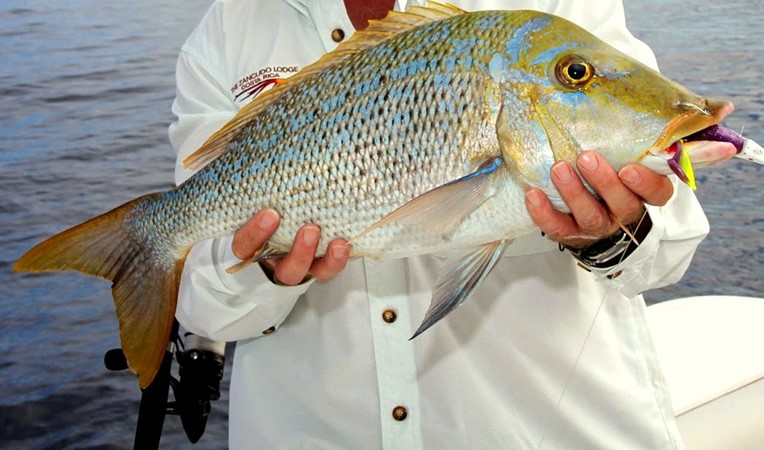Between 10 and 20
percent of the fish species living in the Red Sea water, you won’t find them
anywhere else in the world. From those different species is the “Spangled Emperor”
The spangled emperor
(Lethrinus nebulosus) is sometimes called north-west snapper or yellow emperor.
They might also have referred to as spangles, spangos or spanglies. It belongs
to the Lethrinidae family, which also includes sea bream and large-eye bream.
Known as Lethrinids, they have robust teeth at the front and side of the jaws,
and cheeks without scales. They are carnivorous, bottom-feeding fish. They are
a non-migratory medium sized fish usually found at a depth of 10 to 80 meters
near coral reefs, lagoons, mangrove swamps or sea grass beds.
The spangled emperor can live for more than 30 years. It can grow to 800 mm and 8 kg. It has a golden-brown body with blue spots on the scales of the upper body and blue bars or lines radiating from the eyes over the cheeks and snout.
The spangled emperor has been named an ‘indicator species’ in the Gascoyne Coast Bioregion (from north of Kalbarri to the Ashburton River). This means its stock status, along with the status of several other indicator species, is used to indicate the status of all demersal (bottom-dwelling) fish in the region.
The spango is a carnivorous bottom feeder preying on sea urchins, star fish, mollusks, crabs, shrimp and sometimes small fish. However, its' diet is surprisingly diverse and in the youtube video clip (right) you can see two emperors (in the last section of the clip) at Marsa Shagra Bay battling over a still alive snake eel!
It can change color by
switching on pigment cells in its skin. When an emperor is frightened, it often
produces blotchy vertical brown bands across its body. It can have one color
pattern when taken out of the water and develop another over the following
minutes. This can make identification of the species quite difficult.
The fish has strong teeth, scaleless cheeks and large eyes and while typically around 45 cms in length with a weight of between 4 and 7 kg, they can grow up to 87 cms in length with a maximum lifespan of 28 years.
An interesting aspect of the species is that some of them change sex from female to male prior to reaching sexual maturity.












 All
All
 Politics
Politics
 Economy
Economy
 Tourism
Tourism
 Nature
Nature
 Community
Community

